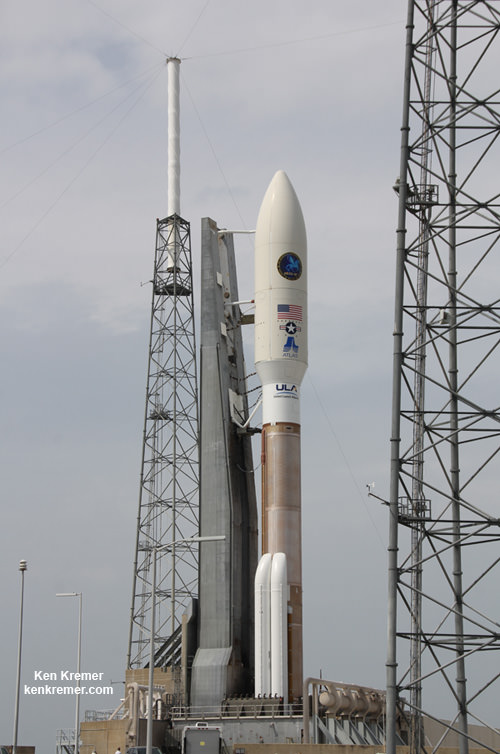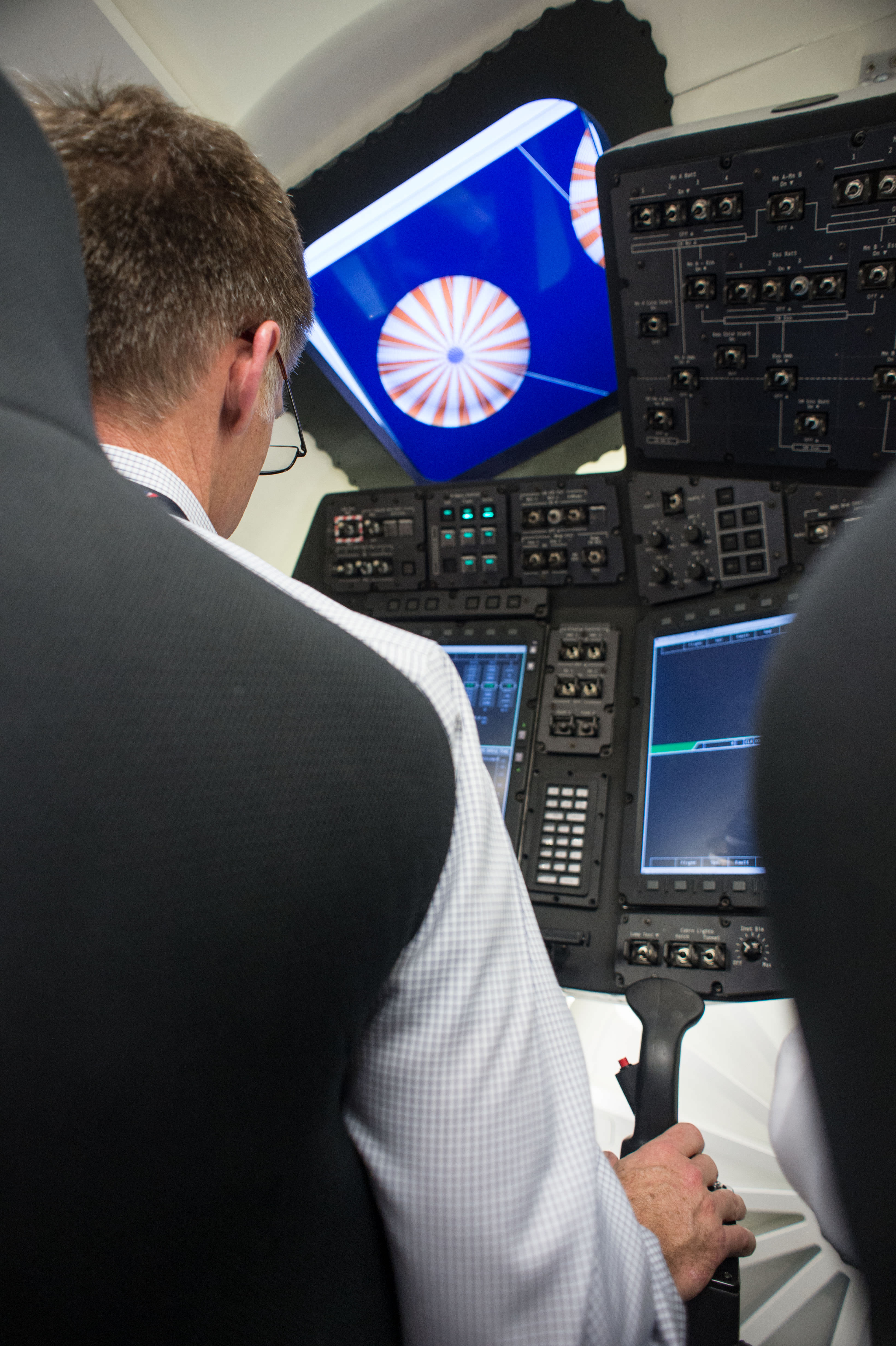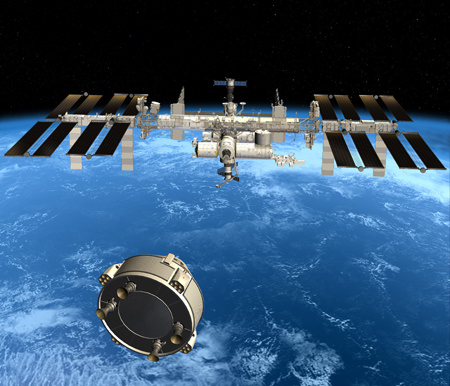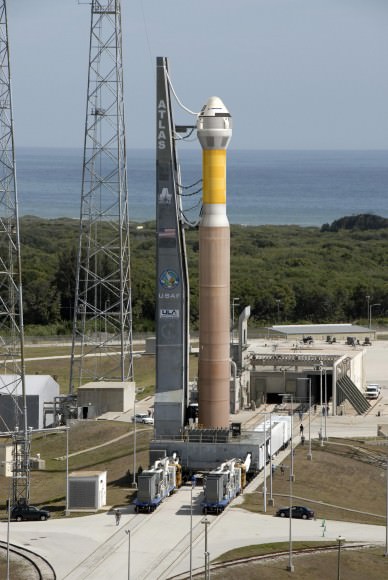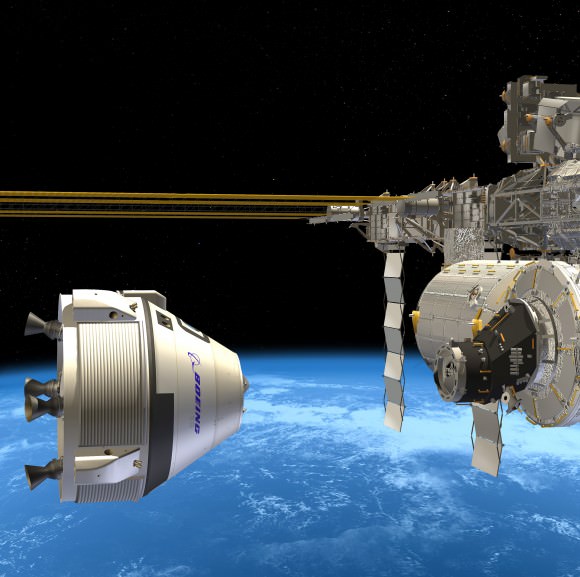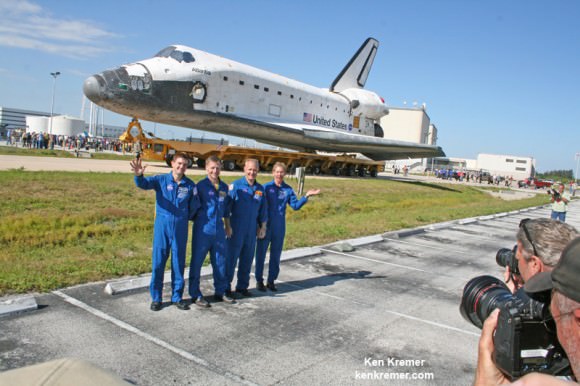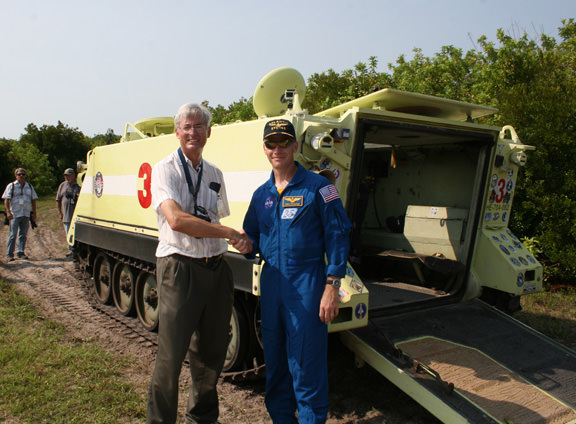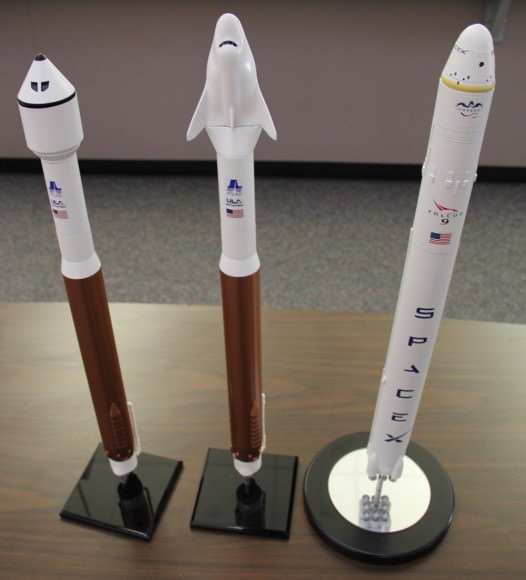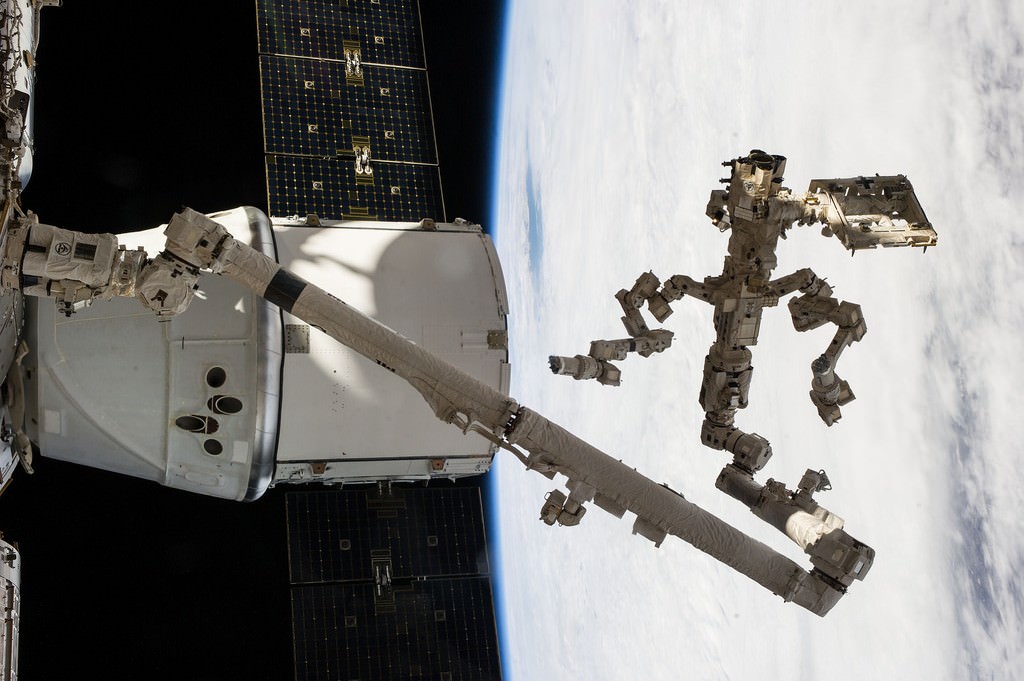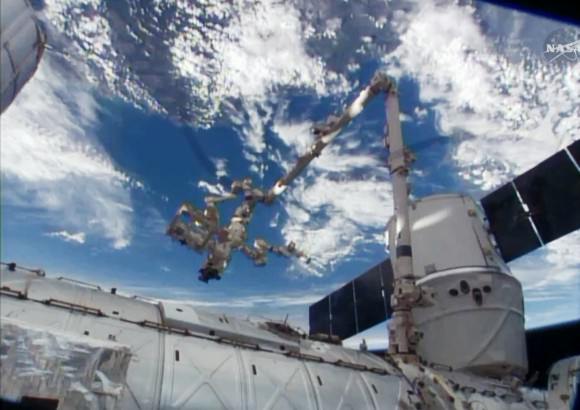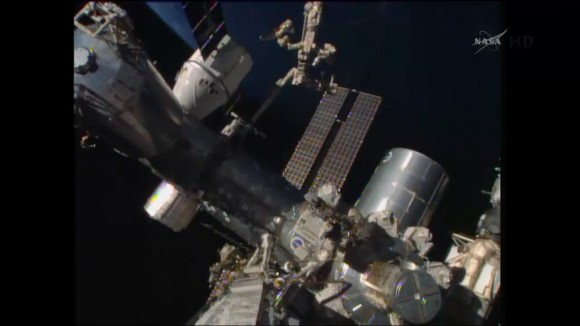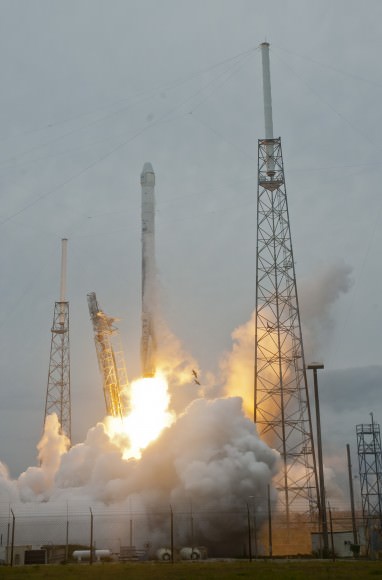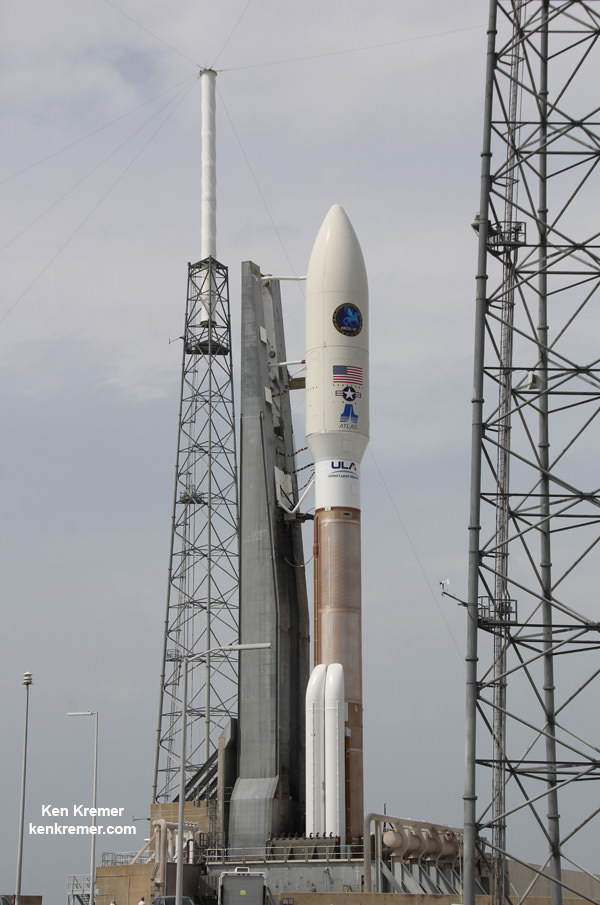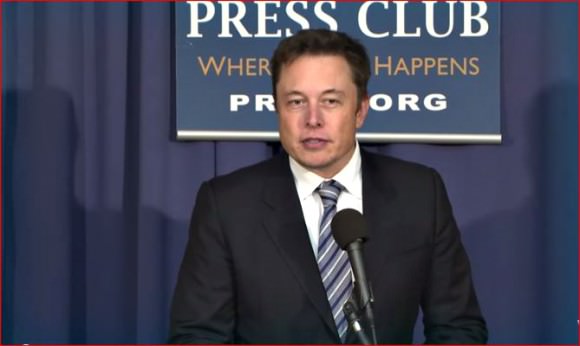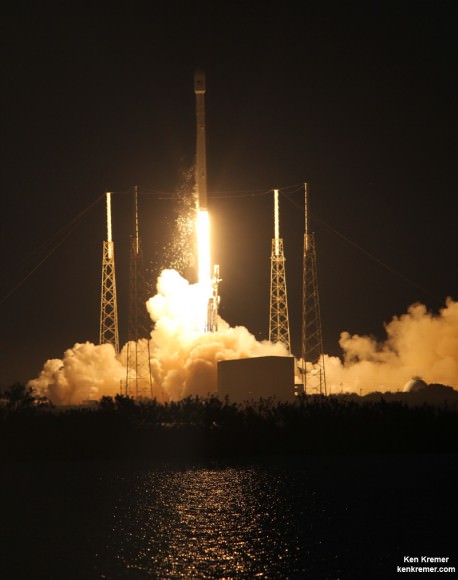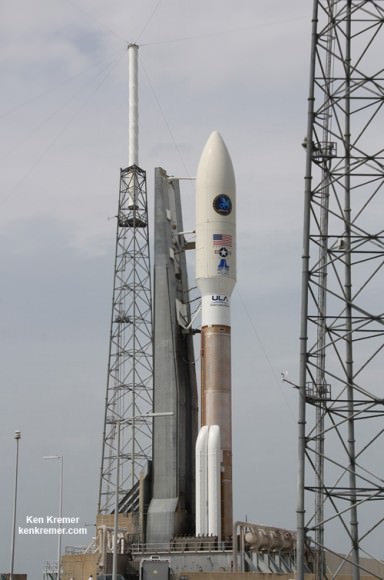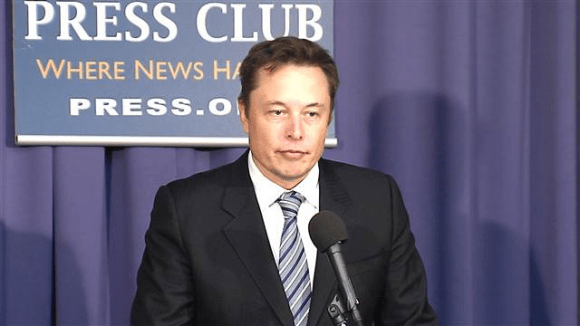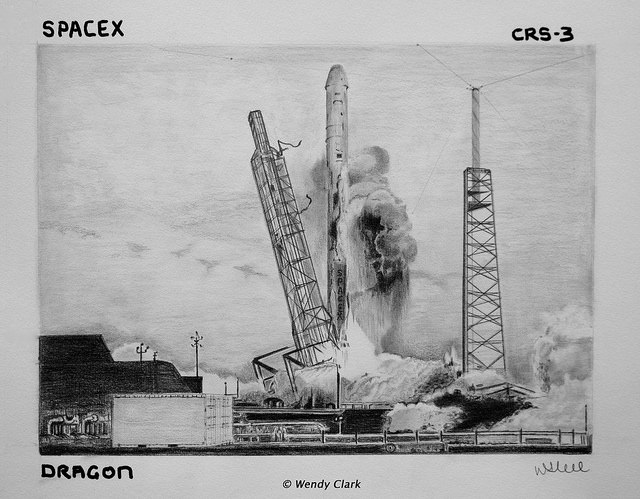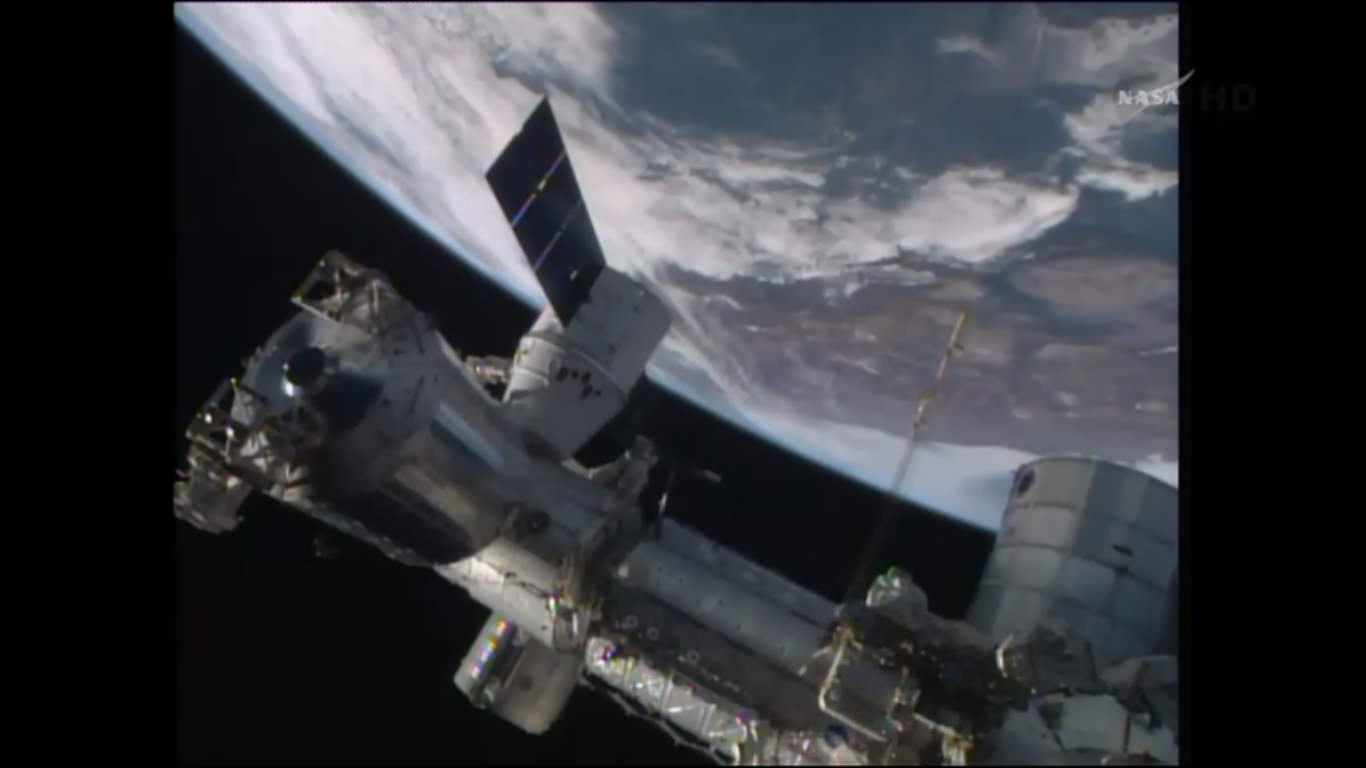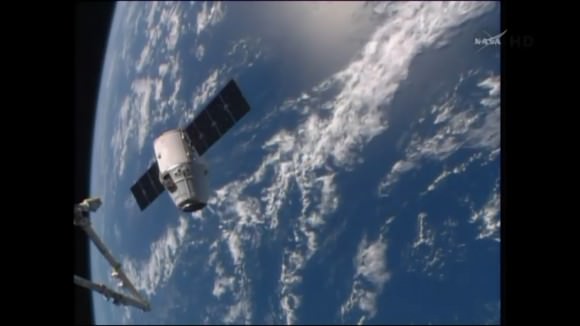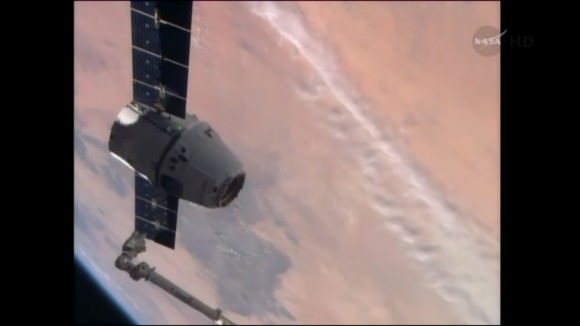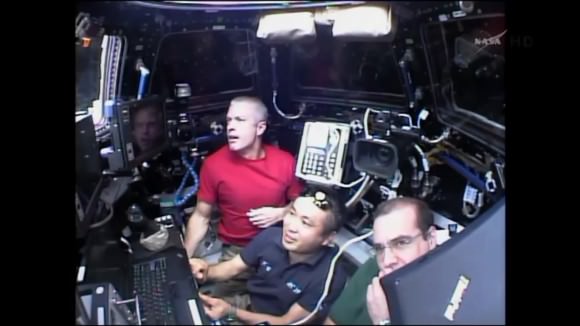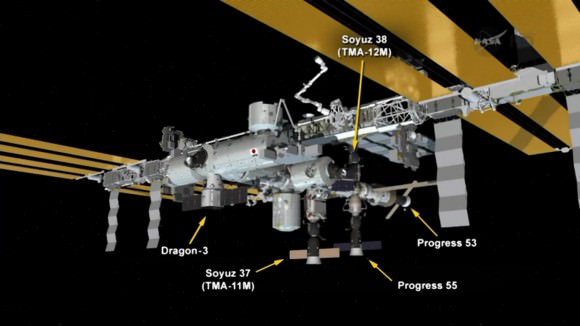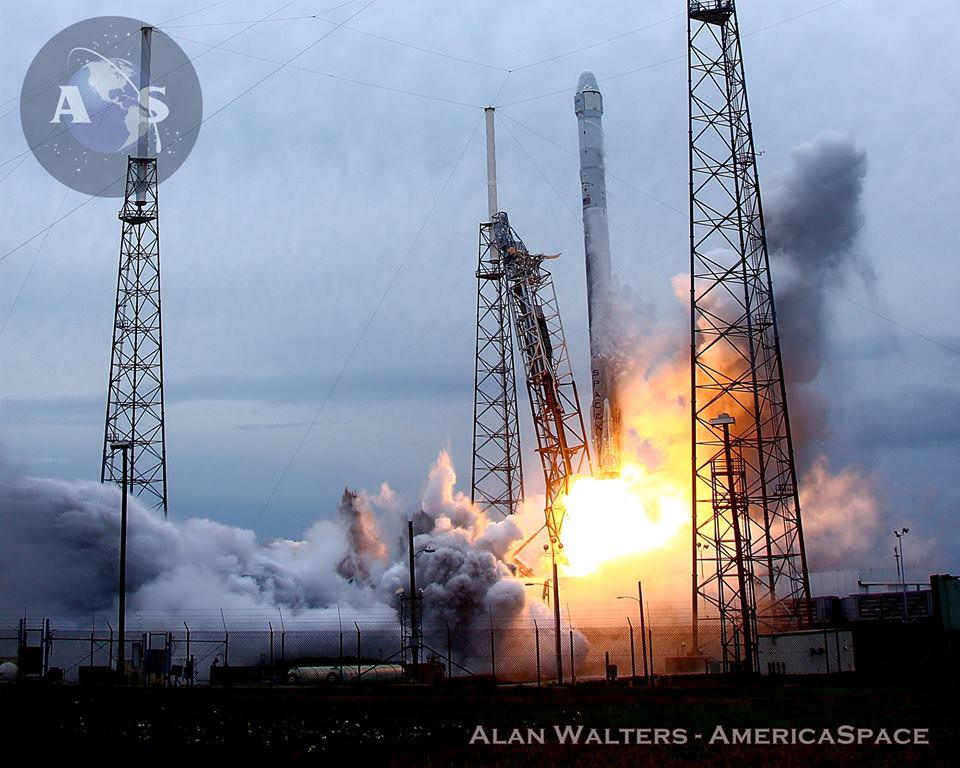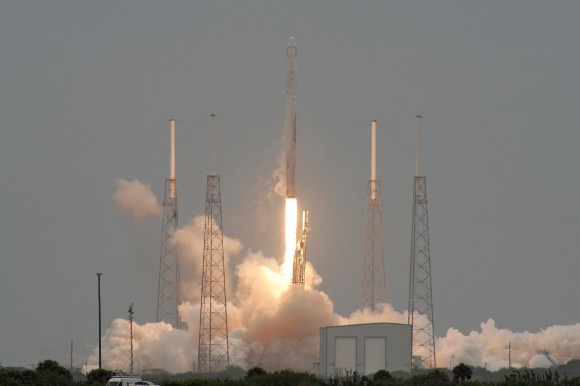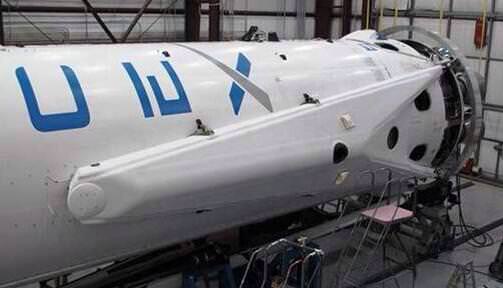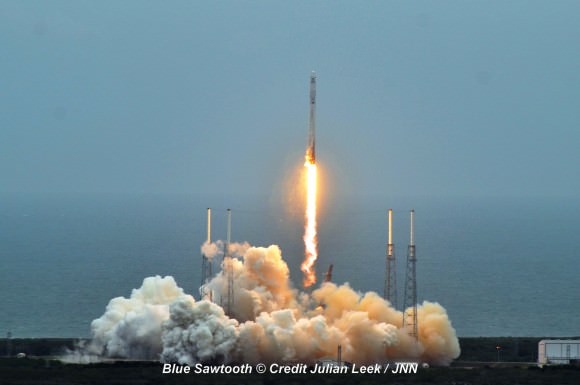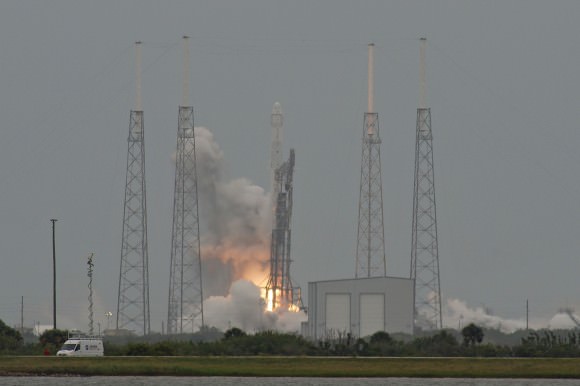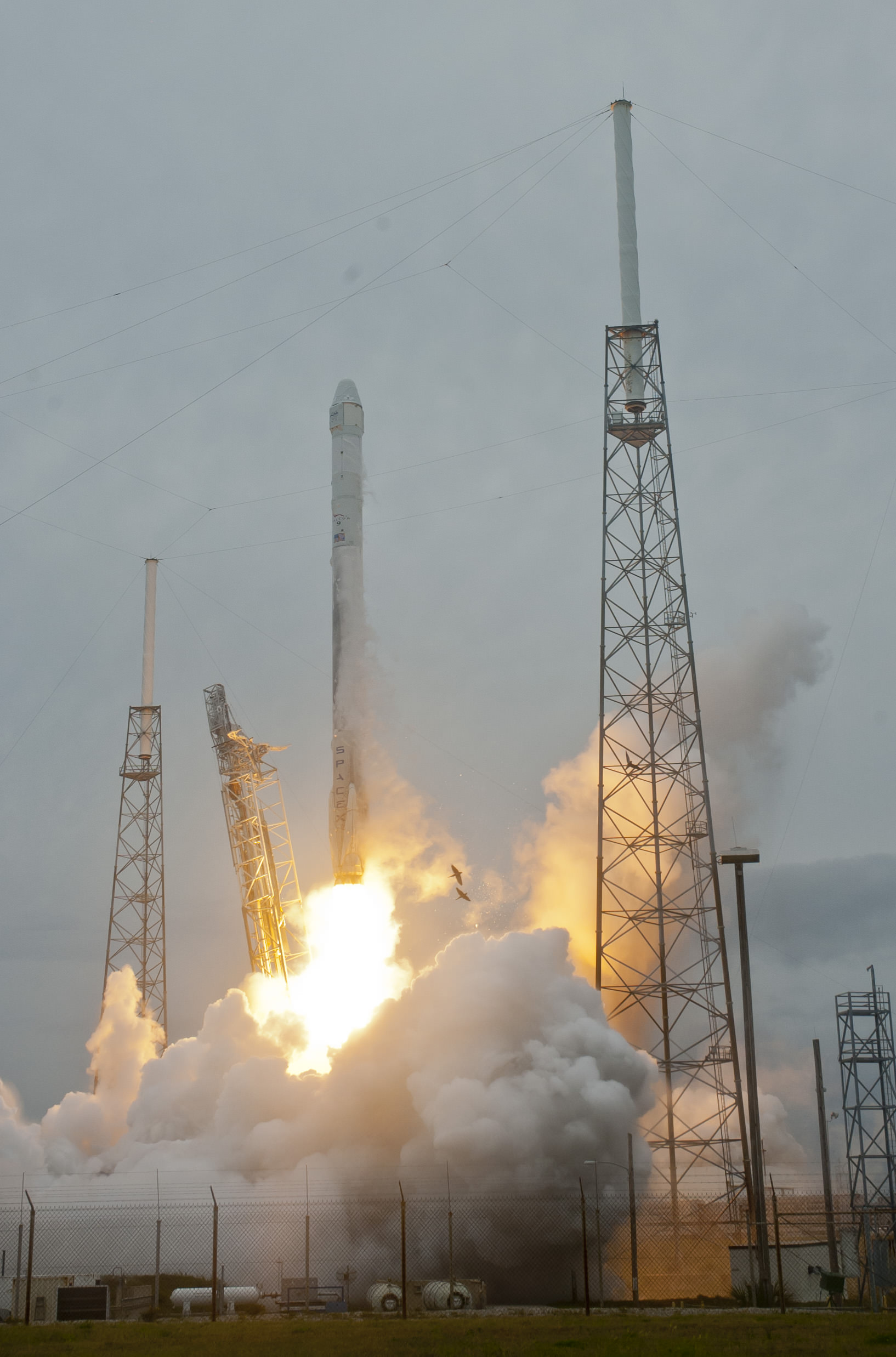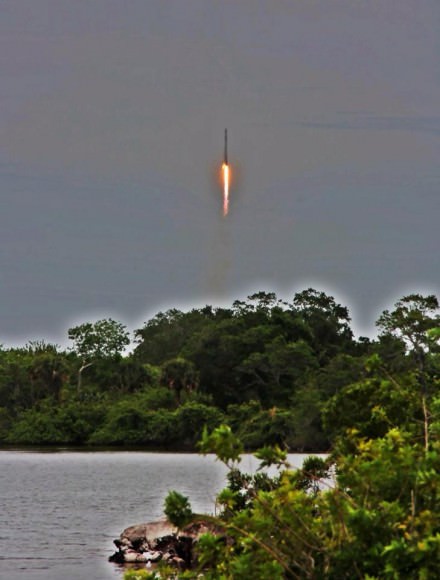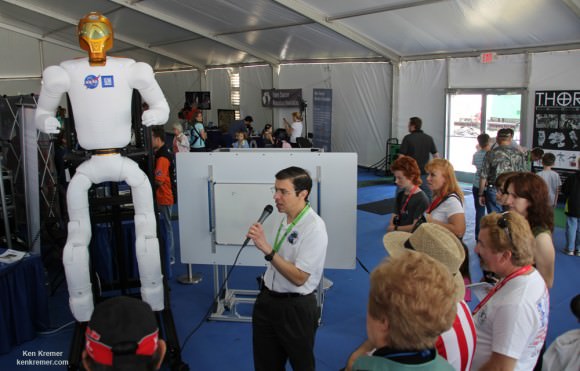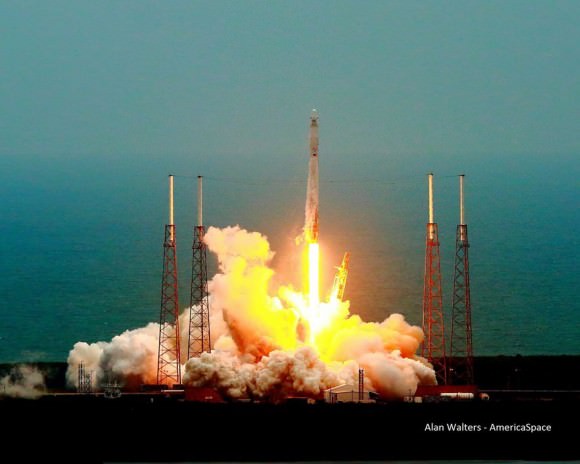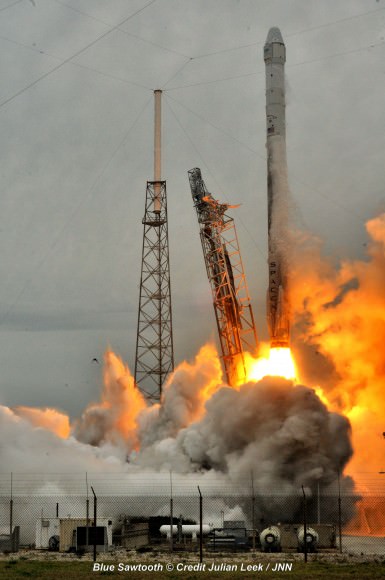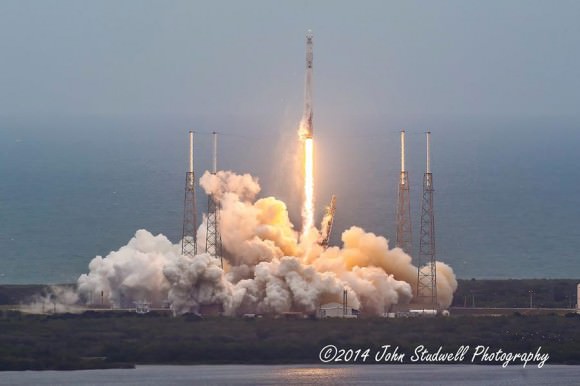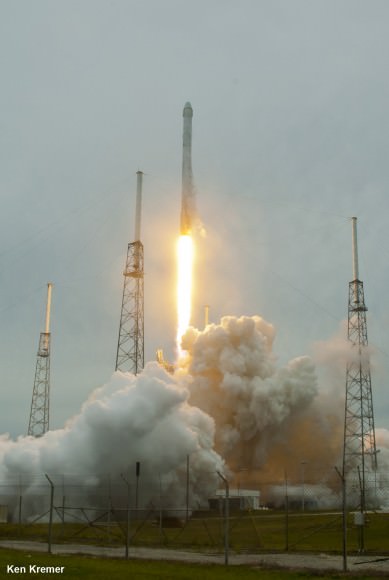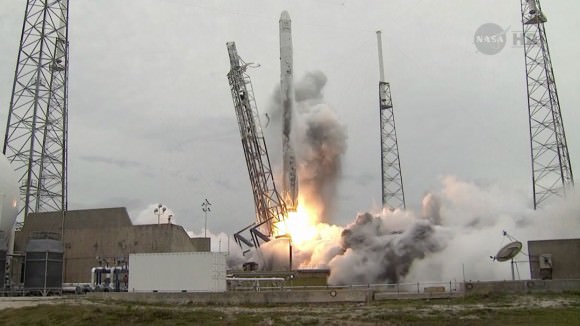United Launch Alliance Atlas V rocket – powered by Russian made RD-180 engines – and Super Secret NROL-67 intelligence gathering payload poised for launch at Space Launch Complex 41 at Cape Canaveral Air Force Station, FL, in March 2014.
Credit: Ken Kremer – kenkremer.com
Story updated[/caption]
Moscow delivered a double whammy of bad news to a broad range of US space efforts today by banning the use of Russian made rocket engines for US military national security launches and by declining to prolong cooperation on the International Space Station (ISS) – says Russia’s deputy prime minister, Dmitry Rogozin, who is in charge of space and defense industries.
Rogozin was quoted in a story prominently featured today, May 13, on the English language website of Russia Today, a Russian TV news and cultural network.
“Moscow is banning Washington from using Russian-made rocket engines, which the US has used to deliver its military satellites into orbit,” said Rogozin according to the Russia Today report.
Virtually every aspect of the manned and unmanned US space program – including NASA, other government agencies, private aerospace company’s and crucial US national security payloads – are highly dependent on Russian & Ukrainian rocketry and are clearly at risk amidst the current Ukrainian crisis as tensions continue to escalate with deadly new clashes reported today in Ukraine – with global repercussions.
The engines at issue are the Russian made RD-180 engines – which power the first stage of the venerable Atlas V rocket built by United Launch Alliance (ULA) and are used to launch a wide array of US government satellites including top secret US military spy satellites for the US National Reconnaissance Office, like NROL-67, as well as science satellites for NASA like the Curiosity Mars rover and MAVEN Mars orbiter.
The dual nozzle RD-180 engines are manufactured in Russia by NPO Energomash. Rogozin’s statement effectively blocks their export to the US.
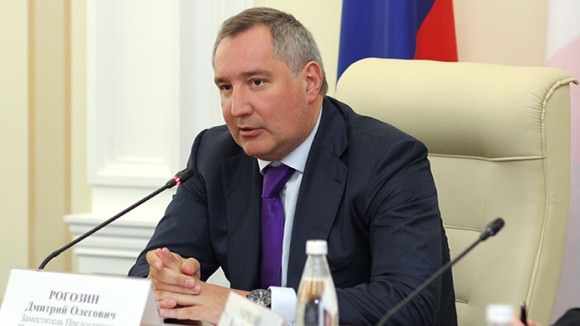
“We proceed from the fact that without guarantees that our engines are used for non-military spacecraft launches only, we won’t be able to supply them to the US,” Rogozin said.
So although the launch of NASA science missions might preliminarily appear to be exempt, they could still be at serious risk based on a qualifier from Rogozin, pertaining to RD-180 engines already delivered.
“If such guarantees aren’t provided the Russian side will also be unable to perform routine maintenance for the engines, which have been previously delivered to the US, he added.
A ULA spokesperson told me that the company has a two year supply of RD-180 engines already stockpiled in the US.
Rogozin’s statements today are clearly in retaliation to stiffened economic sanctions imposed by the US and Western nations in response to Russia’s actions in the ongoing crisis in Ukraine and the annexation of Crimea; as I reported earlier here, here and here.
Therefore, US National Security spy satellite and NASA science launches are left lingering with uncertainty and potential disarray.
Rogozin is specifically named on the US economic sanctions target list.
He was also named by SpaceX CEO Elon Musk in his firms attempt to block the importation of the RD-180 engines by ULA for the Atlas V as a violation of US sanctions.
Federal Judge Susan Braden initially imposed a temporary injunction blocking the RD-180 imports on April 30. She rescinded that order last Thursday, May 8, after receiving written communications clarifications from the US Justice and Commerce departments that the engine import did not violate the US government imposed sanctions.
Rogozin went on to say that “Moscow also isn’t planning to agree to the US offer of prolonging operation of the International Space Station (ISS) [to 2024].
“We currently project that we’ll require the ISS until 2020,” he said. “We need to understand how much profit we’re making by using the station, calculate all the expenses and depending on the results decide what to do next.”
“A completely new concept for further space exploration is currently being developed by the relevant Russian agencies”.
NASA announced early this year the agency’s intention to extend ISS operations to at least 2024, and is seeking agreement from all the ISS partners including Russia.
Since the shutdown of the Space Shuttle program in 2011 before a replacement crew vehicle was available, American astronauts are now 100% dependent on the Russian Soyuz capsule for rides to the ISS and back.
Congress has also repeatedly slashed NASA’s commercial crew program budget, forcing at least an 18 month delay in its start up and thus continued reliance on the Soyuz for years to come at over $70 million per seat.
NASA thus has NO immediate alternatives to Russia’s Soyuz – period.
The Atlas V is also planned as the launcher for two of the three companies vying for the next round of commercial crew contracts aimed at launching US astronauts to the ISS. The commercial crew contracts will be awarded by NASA later this year.
In a previous statement regarding the US sanctions against Russia, Rogozin said that sanctions could “boomerang” against the US space program and that perhaps NASA should “deliver their astronauts to the International Space Station using a trampoline.”
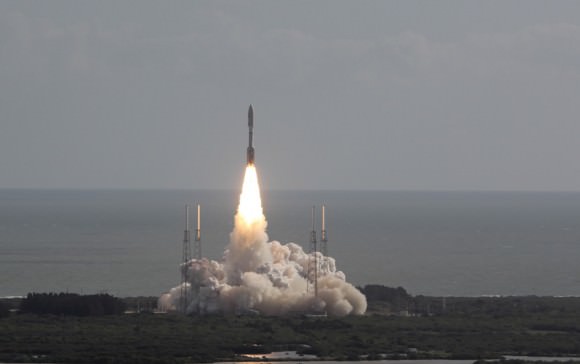
Credit: Ken Kremer – kenkremer.com
Watch for Ken’s articles as the Ukraine crisis escalates with uncertain and potentially dire consequences for US National Security and NASA.
Stay tuned here for Ken’s continuing Boeing, SpaceX, Orbital Sciences, commercial space, Orion, Chang’e-3, LADEE, Mars rover, MAVEN, MOM and more planetary and human spaceflight news.
………
Ken’s upcoming presentation: Mercy College, NY, May 19: “Curiosity and the Search for Life on Mars” and “NASA’s Future Crewed Spaceships.”
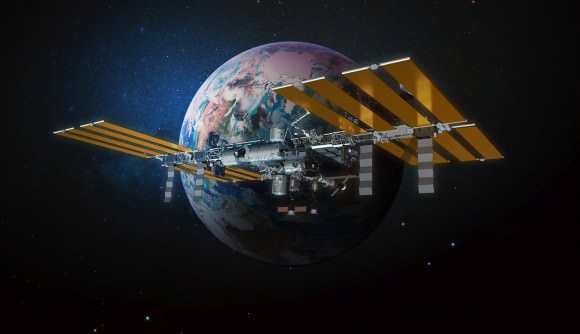
The sole way for every American and station partner astronaut to fly to space and the ISS is aboard the Russian Soyuz manned capsule since the retirement of NASA’s Space Shuttles in 2011. There are currently NO alternatives to Russia’s Soyuz. Credit: NASA

